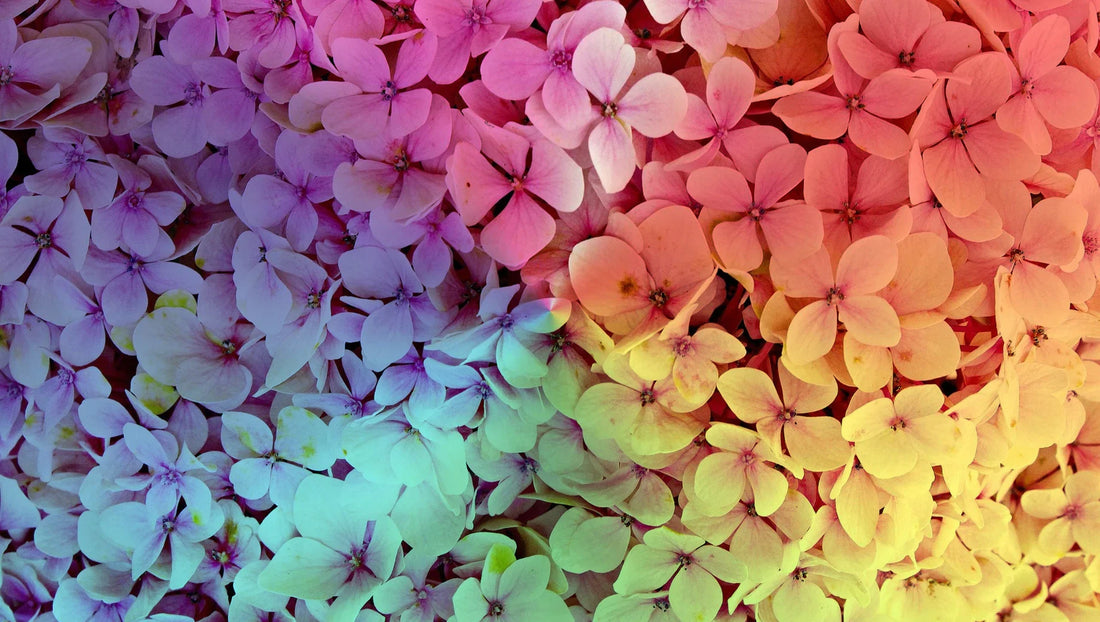
Why Do Hydrangeas Come in Different Colors?
Share
Understanding the Science and Beauty Behind These Color-Changing Blooms
Hydrangeas are among the most beloved garden flowers—and it’s not just because of their lush, globe-shaped blooms. One of the most fascinating things about hydrangeas is their ability to change color, sometimes even on the same plant!
But why do hydrangeas bloom in shades of blue, pink, purple, or even green and white? Is it genetics, soil, or something else entirely?
Let’s explore the colorful world of hydrangeas and uncover the science behind their shifting hues.
What Causes Hydrangeas to Change Color?
The color of hydrangea flowers—particularly in Hydrangea macrophylla (commonly known as Bigleaf Hydrangeas or Mophead Hydrangeas)—is mainly affected by:
1. Soil pH
- Acidic soil (pH below 6.0): Produces blue or lavender-blue flowers
- Neutral to alkaline soil (pH 6.5 and above): Produces pink or reddish-pink flowers
- pH around 6.0–6.4: Often results in purple or mixed tones
💡 Why? Because acidic soil allows hydrangeas to absorb more aluminum, which turns the flowers blue. In alkaline soil, aluminum becomes less available, resulting in pink blooms.
2. Aluminum Availability in Soil
Even if the soil is acidic, a lack of aluminum will result in pink flowers. Many gardeners add aluminum sulfate to make the flowers blue, or garden lime to turn them pink.
3. Hydrangea Variety
Not all hydrangeas can change color. For example:
- Hydrangea macrophylla (Bigleaf) and Hydrangea serrata can change color depending on soil conditions.
- Hydrangea arborescens (like ‘Annabelle’) and Hydrangea paniculata (like ‘Limelight’) do not change color and usually bloom in white or pale green, regardless of soil pH.
4. Aging Blooms
As hydrangea flowers age, their colors often fade or transform:
- Blue flowers may turn greenish or lavender-gray
- Pink flowers may develop bronze or antique tones
- Some blooms may display multiple colors at once during this transition
Common Hydrangea Colors and What They Mean
🌸 Blue Hydrangeas
These blooms typically appear when the soil is acidic. Blue hydrangeas represent serenity, apology, and deep understanding. They’re often used to express regret or calm emotions.
🌸 Pink Hydrangeas
Grown in more alkaline soils, pink hydrangeas symbolize romance, gentle love, and genuine emotion. They're perfect for sweet gestures and celebrations of affection.
🌸 Purple Hydrangeas
Purple shades often emerge when the soil pH is somewhere between acidic and neutral. These flowers convey grace, elegance, and spiritual depth, making them suitable for more thoughtful or symbolic moments.
🌸 White Hydrangeas
These are usually unaffected by soil pH and naturally bloom in white or cream. White hydrangeas stand for purity, honesty, and fresh starts—great for weddings or welcoming a new beginning.
🌸 Green Hydrangeas
Sometimes appearing as blooms age or due to certain environmental factors, green hydrangeas represent balance, renewal, and peace. They're a wonderful choice for calming, nature-inspired arrangements.
Can You Control the Color of Your Hydrangeas?
Yes, to some extent! With the right techniques, gardeners can influence hydrangea color:
- To turn hydrangeas blue: Add aluminum sulfate and acidic compost like pine needles, coffee grounds, or peat moss.
- To turn hydrangeas pink: Add garden lime to raise soil pH and reduce aluminum uptake.
- For purple tones: Aim for a pH between 6.0 and 6.4, though results may vary depending on local conditions.
Keep in mind that results take time and may vary depending on climate, plant age, and soil quality.
Why Are Color-Changing Hydrangeas So Popular?
Aside from their beauty, color-shifting hydrangeas are a symbol of transformation. They remind us that change can be beautiful—and that our environment truly shapes what we become. Their dynamic nature makes them popular in:
- Garden design
- Event decoration (especially weddings!)
- Floral arrangements for gifts and emotions that can’t be captured by one color alone
Final Thoughts
Hydrangeas are more than just flowers—they're natural chameleons that respond to their environment in the most beautiful way. Whether you're a gardener, florist, or simply a flower lover, understanding how and why hydrangeas change color adds a whole new layer of appreciation to these stunning blooms.
